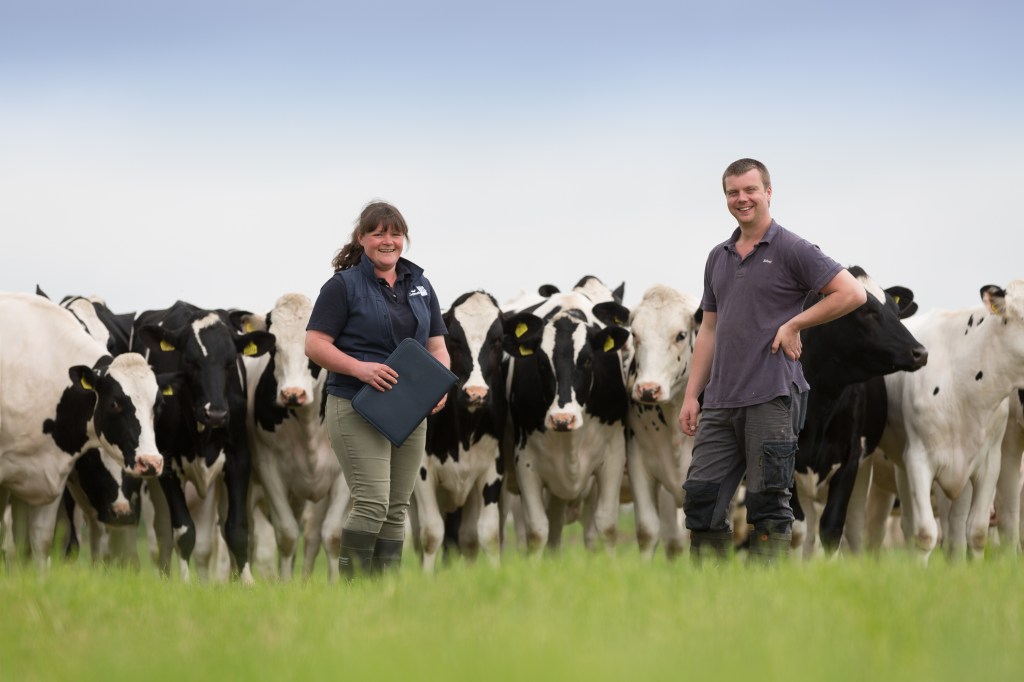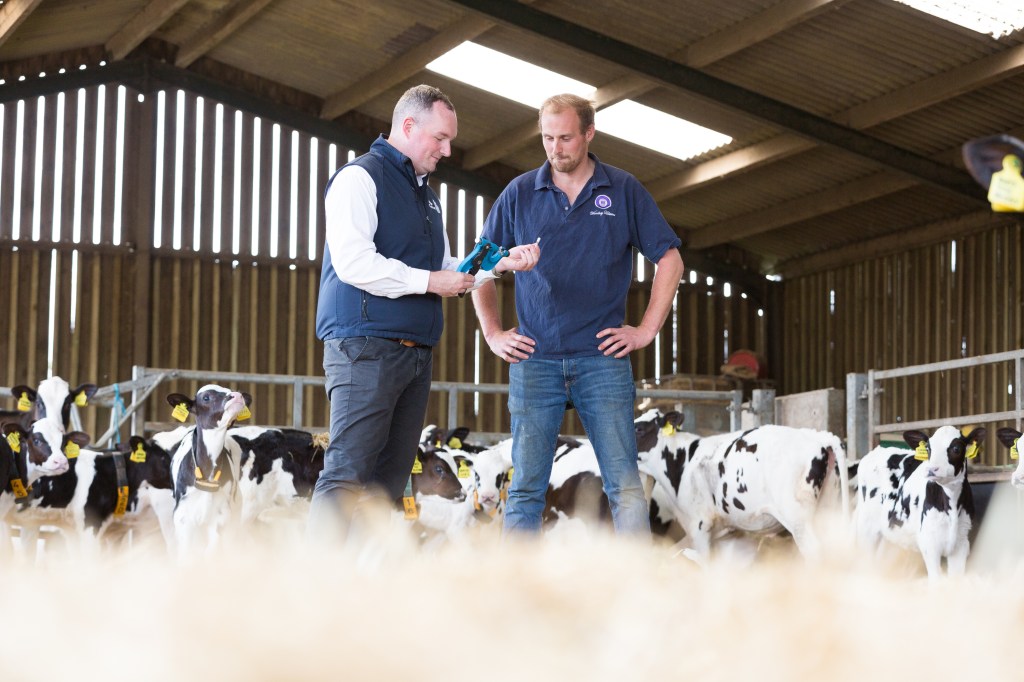What is Genomic testing?
Genomic testing is a method of genetic testing which is now widely available to dairy farmers. Genomic testing is used to obtain information about the genetic merit of individual female animals.
By doing this, dairy farmers can more accurately predict the genetic merit of heifers at a very young age. This helps them to rank their females based on the traits that are important to them and make more informed breeding decisions in the future.
Doing this helps to select and identify the animals they want to use to create their future herd replacements. The data collected will also highlight those which they want to breed to beef.
To conduct a genomic test on an animal, a small tissue sample from the ear of the female will be taken, using a tissue sampling unit (TSU.) Genus ABS experts will use this sample to gather data from the animal, using a specialised software.
The sample taken gives us the pedigree of the animal. It will also identify the key genetic markers associated with desirable traits. The genetic experts use this information to make targeted and significantly more accurate breeding decisions.
Once testing has been completed, the farmer is given a large dataset including information about their herd. The farmer and their Genus ABS breeding advisors will then interpret that data to create their own, personalised breeding strategy.
What is GENEadvance®?
GENEadvance®, is an all-encompassing genetic improvement service, comprising of:
- Genomic testing
- Genetic advice
- Herd ranking
- Genetic reviews
- Customised genetic plans
- Market-leading genetics which are all aligned with your genetic goals and future business plans.
When using some genomic testing laboratories, it can be overwhelming when you are given a large set of data with no real instruction on how to interpret it. That’s why GENEadvance® specialists will be with you every step of the way.
With GENEadvance® you can expect to see genetic improvement faster than ever before.

How do I incorporate genomic testing into my genetic strategy?
Genus ABS Genetic Services Manager, Liam Healy, said: “Genomic testing allows us to realise the true genetic merit of females in the herd.”
“Used correctly, it allows more precise selection of females to breed replacements from. This means producers can accurately target the animals that rank higher against their own farm-specific breeding goals.”
Mr Healy stresses the importance of interpreting the data from genomic testing carefully. When done correctly, genomic testing can accelerate your herd’s rate of genetic progress. However, if the data collected isn’t put into practice and action isn’t taken, it can be a missed opportunity.
“The genomic data is more reliable compared to breeding decisions based on parent average or performance. The reliability of genomic testing is around 70% compared to 33% or less for parent averages,” he added.
Some females may not be as good as you had anticipated when comparing them to their parent averages. Others may perform better.
Mr Healy said: “When combined with incorrect parentage it is not unusual for genomic evaluations to change 30% of breeding decisions in a herd. This will have a huge impact on genetic progress.”
Should I genomic test every cow in my herd?
Genomically testing all animals in your herd will not necessarily give you the best return on investment since most of the cows will not be good enough to produce a heifer calf. To test all the herd to only find a few unexpectedly high animals will provide minimal gain.
Mr Healy advised: “With a breeding strategy based on using sexed dairy semen and beef semen, producers don’t need to use a high proportion of the herd to breed replacements. To maximise return on investment, test all heifers at least two months before their first-breeding date. The two month lead time will ensure results are back in time to help make informed breeding decisions.
“If you test all heifers up to the point of calving you will get the best data on what should be your best animals, but the additional cost of testing means the return on investment will take longer.
“All females in the herd should then be ranked on one index, as it is possible that some cows will have higher genetic merit than the heifers. ‘A great place to start is using national evaluations such as PLI, with further customised refinement of the ranking based on farm-specific goals.
“Whether sourced from genomics or parental averages, this method of ranking allows producers to pick the best animals to breed replacements from. Just ranking heifers against heifers can be a missed opportunity.”
Try GENEadvance® today
Using GENEadvance® is a great resource to be used as part of your breeding strategy. By using this breeding system which combines data with our mating programme, GMS, you can be confident in always getting the highest return on investment.
Invest in GENEadvance® today. Visit our website today to learn more, or contact your local breeding advisor using the ‘Find My Representative’ tool and the bottom of this page.



